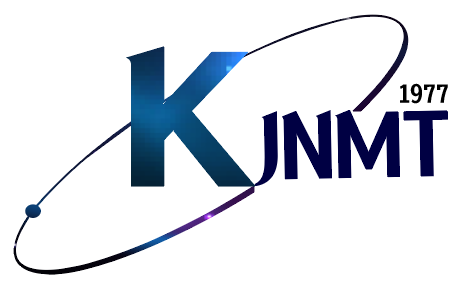Abstract
Purpose: PET-CT imaging require an appropriate quality assurance system to achieve high efficiency and reliability. Quality control is essential for improving the quality of care and patient safety. Currently, there are performance evaluation methods of UN2-1994 and UN2-2001 proposed by NEMA and IEC for PET-CT image evaluation. In this study, we compare phantom images with the same experiments before and after PET-CT 3D normalization and well counter correction and evaluate the usefulness of quality control. Materials and methods: Discovery 690 (General Electric Healthcare, USA) PET-CT equiptment was used to perform 3D normalization and well counter correction as recommended by GE Healthcare. Based on the recovery coefficients for the six spheres of the NEMA IEC Body Phantom recommended by the EARL. 20kBq/㎖ of 18F was injected into the sphere of the phantom and 2 kBq/㎖ of 18F was injected into the body of phantom. PET-CT scan was performed with a radioacitivity ratio of 10:1. Images were reconstructed by appliying TOF+PSF+TOF, OSEM+PSF, OSEM and Gaussian filter 4.0, 4.5, 5.0, 5.5, 6.0, 6,5 ㎜ with matrix size 128×128, slice thickness 3.75 ㎜, iteration 2, subset 16 conditions. The PET image was attenuation corrected using the CT images and analyzed using software program AW 4.7 (General Electric Healthcare, USA). The ROI was set to fit 6 spheres in the CT image, RC (Recovery Coefficient) was measured after fusion of PET and CT. Statistical analysis was performed wilcoxon signed rank test using R. Results: Overall, after the quality control items were performed, the recovery coefficient of the phantom image increased and measured. Recovery coefficient according to the image reconstruction increased in the order TOF+PSF, TOF, OSEM+PSF, before and after quality control, RCmax increased by OSEM 0.13, OSEM+PSF 0.16, TOF 0.16, TOF+PSF 0.15 and RCmean increased by OSEM 0.09, OSEM+PSF 0.09, TOF 0.106, TOF+PSF 0.10. Both groups showed a statistically significant difference in wilcoxon signed rank test results (P value<0.001). Conclusion: PET-CT system require quality assurance to achieve high efficiency and reliability. Standardized intervals and procedures should be followed for quality control. We hope that this study will be a good opportunity to think about the importance of quality control in PET-CT
Figures & Tables

Fig. 1. Discovery 690 PET-CT scanner was used in this study.


